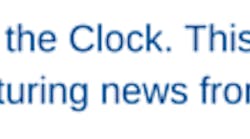This might be one of the most important scientific discoveries in decades. The Laser Interferometer Gravitational-Wave Observatory (LIGO) has confirmed it has finally found evidence of gravitational waves. Rumors had been circulating for months about the discovery, but the discover was not confirmed until today. In his Theory of Relativity, Albert Einstein theorized the existence of gravitational waves, but the genius died before he was able to actually prove their existence.
Here is an excerpt from Science Magazine explaining the creation of gravitational waves: "Long ago, deep in space, two massive black holes—the ultrastrong gravitational fields left behind by gigantic stars that collapsed to infinitesimal points—slowly drew together. The stellar ghosts spiraled ever closer, until, about 1.3 billion years ago, they whirled about each other at half the speed of light and finally merged. The collision sent a shudder through the universe: ripples in the fabric of space and time called gravitational waves."
The gravitational waves were created by merging two black holes. One had the mass of 29 suns, while the other had a mass of 36 suns.
According to CNN: "The gravitational waves stretched and compressed space around Earth.
However, the waves are so small that it takes a detector like LIGO, capable of measuring distortions one-thousandth the size of a proton, to observe them. They were observed on September 14, 2015.
Scientists heard the sound of the black holes colliding as a "chirp" lasting one-fifth of a second. Though gravitational waves aren't sound waves, the increase in frequency the collision exhibited in its last milliseconds -- when the black holes were mere kilometers apart and growing closer -- is a frequency we can hear, said Deirdre Shoemaker, a Georgia Tech physicist who works on LIGO."
